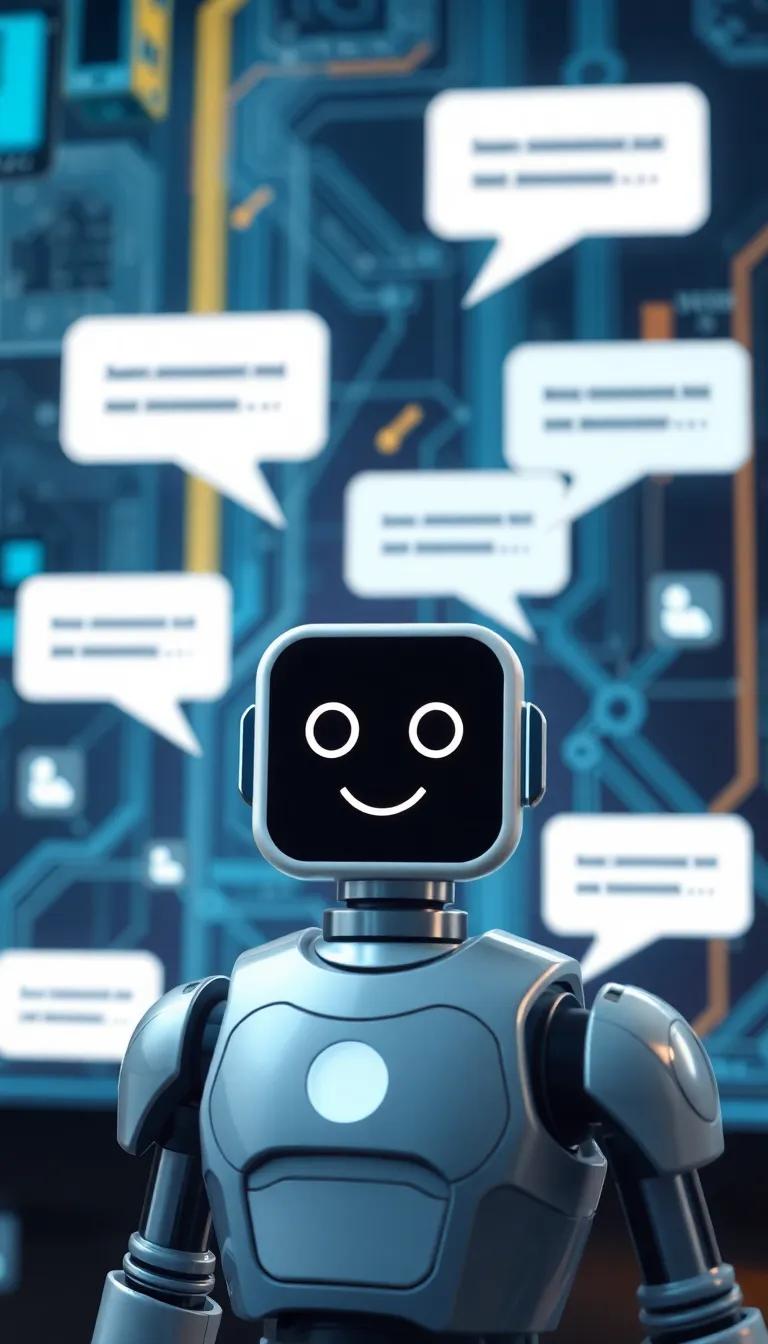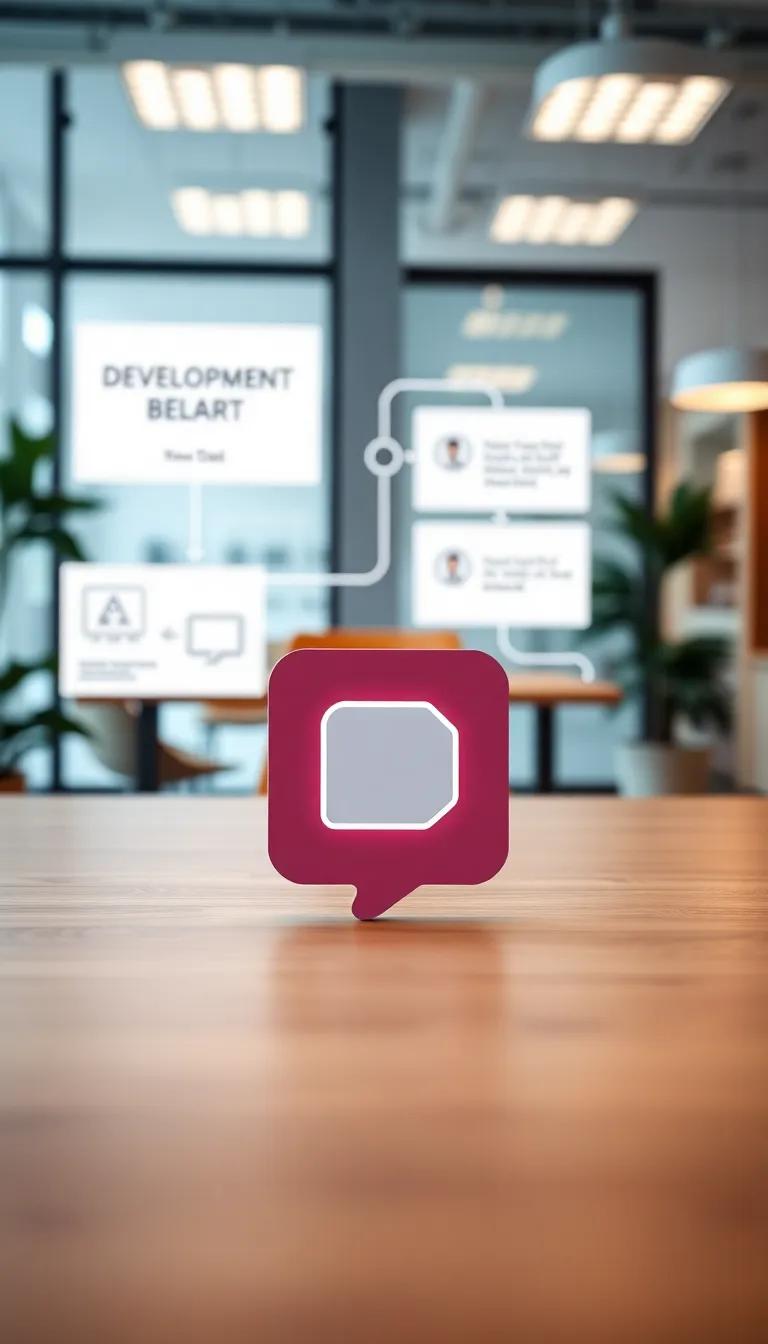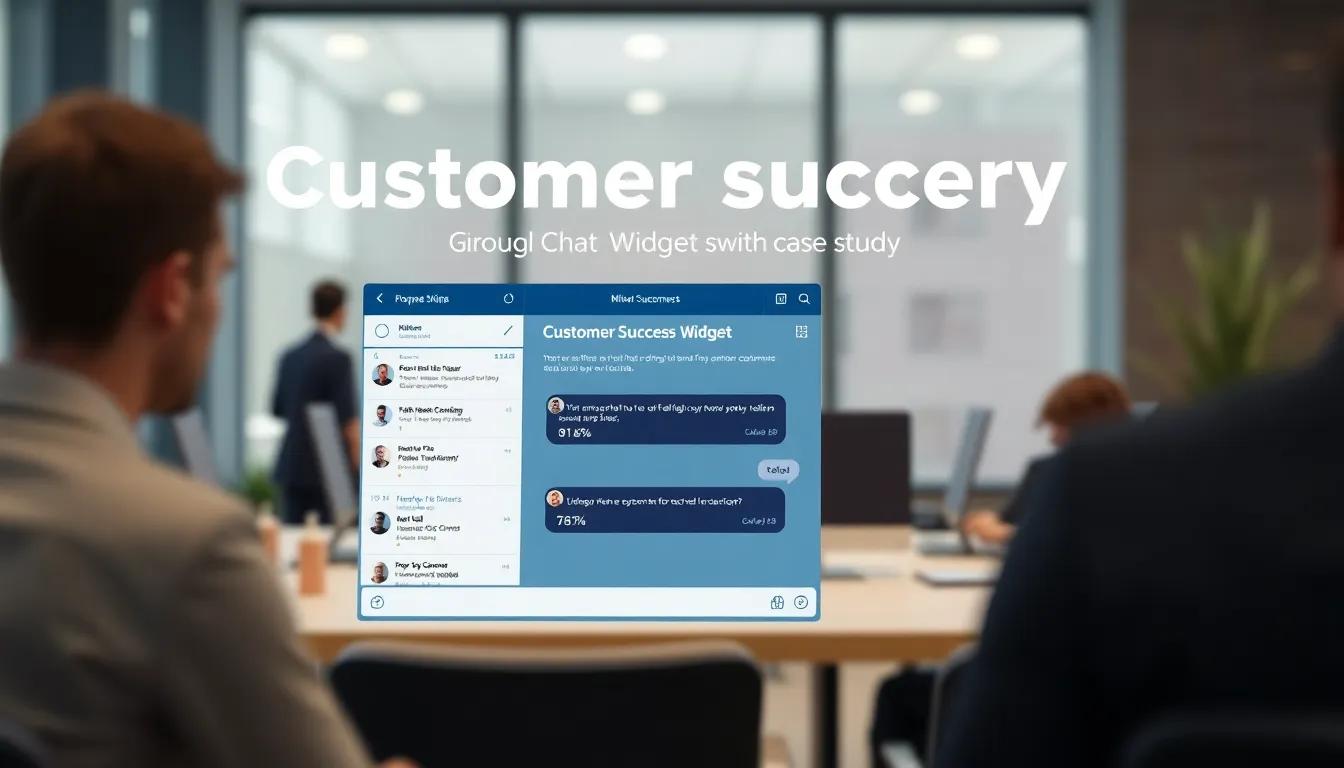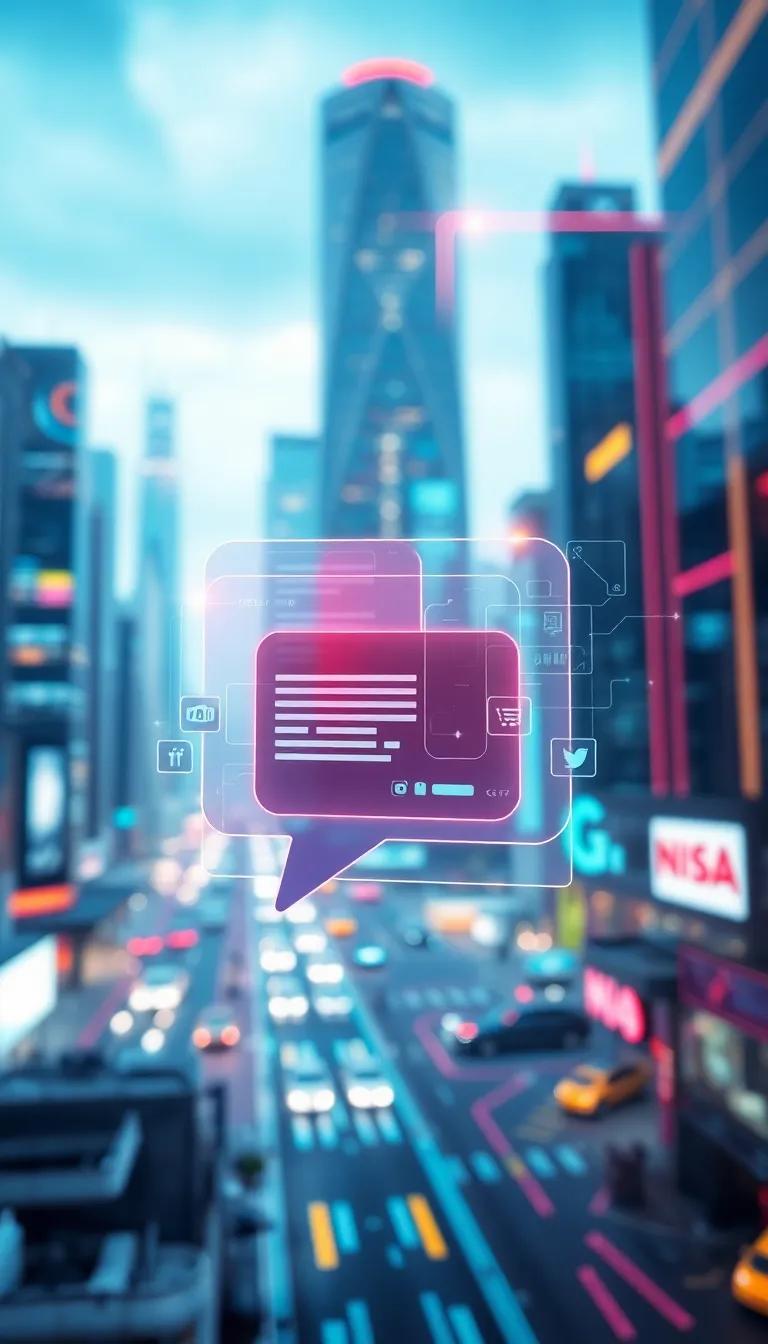Introduction
In today’s digital landscape, businesses must adapt to the increasing demand for effective online communication. The rise of chat technology, particularly through free website chat widgets, has revolutionized how companies engage with visitors. Chat case studies demonstrate the potential of these tools in enhancing customer interactions, leading to higher satisfaction rates and improved conversions. This article explores the pivotal role of chat case studies, offering insights on how implementing a simple chat widget can transform user experience and drive business success.
From understanding chatbot mechanics to real-world applications and performance metrics, this in-depth exploration will showcase best practices and strategies for leveraging chat technology. Whether you are a small business owner or part of a larger enterprise, learning how to effectively implement a website chat widget can yield substantial benefits. Let’s examine the evidence through a comprehensive chat case study to guide your approach in enhancing visitor engagement.
Understanding Chatbots and Their Functionality
Chatbot Design and Functionality
The integration of chatbots into businesses has fundamentally transformed online customer interactions. At their core, chatbots are software applications designed to simulate human conversation through text or voice interactions. Their design often incorporates natural language processing (NLP) and artificial intelligence (AI) to understand and respond to user queries in real time. This design allows chatbots to either follow predefined scripts or leverage machine learning algorithms to adapt to unique user inputs.
Functionality is a critical aspect of chatbots. They can be broadly classified into two categories: rule-based chatbots and AI-driven chatbots. Rule-based chatbots operate on a fixed set of predefined responses and are best suited for simple queries, such as FAQs about products or services. Conversely, AI-driven chatbots utilize advanced technologies to learn from interactions, enabling them to handle complex conversations and provide personalized experiences. This flexibility means that businesses of various sizes can utilize chatbots to meet their specific needs.
Evolution of Chatbots in Customer Service
The evolution of chatbots reflects the growing expectations of consumers in today’s marketplace. Early versions of chatbots, which operated on limited scripts, often fell short of delivering meaningful engagement. However, advancements in AI and machine learning have ushered in a new era where chatbots can conduct nuanced interactions that were previously the domain of human agents. These advancements have been crucial, especially with the increased demand for instant customer service solutions.
In the current customer service landscape, chatbots are not just supplementary tools but have become essential for businesses striving to provide immediate assistance. They function 24/7, ensuring that visitors to a website can engage with the brand at any time, which enhances user experience significantly. Whether addressing simple inquiries or assisting with complex service requests, chatbots have established themselves as versatile assets in the digital communication toolkit of companies.
As businesses continue to adapt to the needs of their customers, the role of chatbots is likely to expand. Their capacity for data analysis allows companies to gain insights into customer preferences and behaviors, informing strategic decisions aimed at improving service delivery. In essence, chatbots are not just technological novelties; they are now pivotal players in elevating customer interactions.
The Emergence of Website Chat Widgets Explore Development and Vital Roles in Online Business
The Evolution of Chat Widget Technology
Website chat widgets have significantly transformed the way online businesses interact with their visitors. These dynamic tools enable businesses to establish real-time communication channels, aiding in customer service, lead generation, and user engagement. Initially conceived as simple query forms, chat widgets have evolved into sophisticated platforms that utilize artificial intelligence and machine learning to deliver a personalized experience.
The pivotal shift towards chat widgets began with the need for immediate customer support. Traditional communication methods, such as email or phone calls, often resulted in delays that could frustrate users. As a response, chat widgets emerged, providing a streamlined, efficient way for visitors to seek help. Smart coding and API integrations have further enhanced their capabilities, making it easy for businesses to embed these tools into their websites with minimal technical knowledge.
The primary objective of implementing a website chat widget is to engage visitors effectively. These widgets offer a personal touch, often creating a conversational atmosphere that helps in establishing rapport with users. Unlike static FAQ pages, chat widgets allow for interactive dialogue, enabling businesses to address queries promptly while guiding users toward desired actions.
By providing an array of functionalities, such as automated responses to common questions and the ability to route more complex queries to human agents, chat widgets ensure that no customer feels ignored. They serve as an integral part of customer relationship management by tracking interactions, gathering data, and providing insights that can inform future marketing strategies.
Incorporating chat widgets can drive conversions. By creating a seamless user journey, businesses can enhance customer satisfaction and foster loyalty. A well-placed chat widget can catch users’ attention right when they are contemplating a purchase, significantly increasing the probability of conversion.
As we further explore the benefits and functionalities of chatbot technology in online interactions, it becomes evident that chat widgets are not merely an added feature; they are a vital instrument for any business seeking to create meaningful connections with its audience. The seamless transition from conventional customer service to engaging digital communication exemplifies the potential of chat applications in fostering a vibrant online presence.
Measuring the Success of Chat Implementations
Key Metrics for Evaluating Chat Success
Quantifying the impact of chat implementations on business performance requires a focus on several key metrics. By measuring conversion rates, businesses can gain insights into how effective their chat solutions are at turning interactions into sales. Conversion rate tracking can reveal whether engaged visitors proceed to complete purchases, sign up for newsletters, or engage in other desired actions. A notable increase in conversion rates often indicates that the chat widget is contributing positively to the customer journey.
Customer satisfaction is another critical metric to evaluate. Combining direct feedback from customers, such as post-chat surveys and Net Promoter Scores (NPS), offers a clear picture of user experience. High satisfaction ratings indicate that chat interactions are meeting or exceeding customer expectations. By analyzing common themes in feedback, businesses can identify strengths to build upon and areas that may require improvement.
Engagement Levels as a Measure of Effectiveness
Engagement metrics provide a further layer of insight. These include the average duration of chat interactions, the number of messages exchanged, and the frequency of repeat visits from users who previously engaged with the chat. A longer interaction time may signify deeper engagement, indicating that visitors find the chat valuable for resolving their inquiries. Tracking how often customers return after utilizing the chat feature can also reveal its effectiveness in creating lasting connections.
Analyzing the rate of abandonment during chats can be equally informative. If many visitors exit before the conversation concludes, it may highlight potential gaps in the communication flow or the chatbot’s ability to address user needs effectively. In this regard, continuous monitoring allows businesses to iterate on their chat implementations, refining scripts and AI responses to ensure a seamless experience.
A combination of these metrics provides a comprehensive view of a chat widget’s performance. By implementing robust measurement strategies, businesses can not only enhance their understanding of customer interactions but also leverage these insights to drive continuous improvement and foster greater customer loyalty. As the evolving landscape of online retail emphasizes the need for effective customer engagement, such metrics become indispensable for sustained success.
RealWorld Chat Case Studies Engaging Visitors with Chat Widgets
Successful Implementations and Documented Advantages
Numerous businesses across various sectors have recognized the transformative potential of chat widgets, leading to significant enhancements in online customer interactions. One such example is an e-commerce company that implemented a chat widget to address customer inquiries in real-time. The results were striking: within just two months, their conversion rate saw an increase of 20% due to the instant responses provided by the chatbot. Customers expressed appreciation for the immediate assistance, reducing the abandonment rate during the checkout process.
Another impactful case can be found in the hospitality industry, where a hotel chain integrated a chat widget into its website. This allowed visitors to ask questions about room availability and local attractions directly. The immediate availability of information not only improved visitor engagement but also translated into a remarkable 30% uptick in direct bookings. Customers reported feeling more connected and valued, particularly because they could communicate their needs without waiting for email responses.
A clinic adopted a chat widget to streamline appointment scheduling and provide quick answers to patient inquiries. This implementation reduced the average time taken to book appointments by half, offering patients a more efficient service. Importantly, the clinic noted a 40% increase in patient satisfaction scores, underscoring the importance of timely information in the healthcare sector.
A case in finance also highlights the effectiveness of chat widgets. A banking institution introduced a chatbot to assist customers with frequently asked questions about services like account management and loans. The chatbot’s ability to provide rapid, accurate answers resulted in a decrease of 50% in call center volume, allowing their agents to focus on more complex issues. This not only improved operational efficiency but also significantly elevated customer experience as issues were resolved more swiftly.
These case studies reflect the myriad ways that chat widgets can enhance visitor interaction. By prioritizing immediate communication and personalized assistance, businesses have successfully converted inquiries into solutions, creating a win-win scenario for both the customer and the company. As organizations continue to recognize the value of real-time engagement, it becomes increasingly clear that chat technology is essential for modern customer relationships.
Enhancing Customer Experience Through Chats
Personalization in Chat Interactions
Effective chat interactions have revolutionized customer experience by leveraging personalization and immediate feedback. One of the most remarkable aspects of implementing chat widgets on websites is the ability to tailor conversations based on individual user data. For instance, through the integration of customer relationship management systems, chatbots can greet visitors by name, reference previous interactions, and suggest products or services based on past behaviors. This level of personalization not only creates a welcoming atmosphere but also helps in building customer loyalty as they feel recognized and valued.
The application of personalized chat interactions extends beyond just greetings. Tailoring responses to the visitor’s industry, browsing history, or specific inquiries significantly enhances the overall engagement level. If a customer is exploring a particular product, the chatbot can provide relevant information or direct them to similar offerings. This not only facilitates quicker decision-making but also demonstrates an understanding of customer needs, creating a more emotionally connected experience.
Immediate Feedback and Customer Satisfaction
Another crucial factor in enhancing customer experience through chat interactions is the provision of immediate feedback. In a world where customer patience is dwindling, chat widgets provide real-time responses to inquiries, making information readily accessible. This aspect is vital, especially for customers seeking quick resolutions to their questions or issues. A study showcased that businesses utilizing chat widgets often report shorter response times, which directly correlates with increased customer satisfaction. Quick resolutions lead to happier customers who are more likely to return in the future.
Instant feedback enables businesses to gather insights into frequently asked questions or common concerns. This data can shape future interactions and improve overall service quality. For instance, recurring questions can lead to enhanced chatbot training, allowing for improved accuracy in responses. This feedback loop not only aids in providing better service but also conveys to customers that their concerns are heard and addressed promptly.
The fusion of personalization and immediate feedback creates a virtuous cycle where customers feel more connected to the brand. Engaging visitors through intelligent, responsive chat interactions undeniably enhances their overall experience, making them more likely to convert and remain loyal in the long run. Businesses that invest in these technologies find that the benefits extend far beyond customer interaction, positively impacting their bottom line.
Overcoming Common Challenges in Chat Implementation
Identifying Technical Issues and User Resistance
Effectively implementing chat widgets can introduce a variety of challenges for businesses, particularly when aiming to engage visitors. One of the key technical issues is integration with existing systems. Organizations often face complications while linking chat functionalities with customer relationship management (CRM) tools, websites, and databases. Ensuring seamless data exchange is vital for providing personalized responses, yet integration hurdles can create frustrating bottlenecks. Businesses may need to invest time and resources into customizing the chat widget to align with their systems, which can delay implementation and lessen user satisfaction.
Another common technical challenge is ensuring that the chat widget operates smoothly across various devices and platforms. The rise of mobile browsing requires chat solutions to be responsive and user-friendly across multiple screen sizes. If the chat widget is not optimized for mobile devices, it can lead to a poor user experience, ultimately driving potential customers away. Testing and monitoring performance are essential to rectify such issues promptly and improve overall functionality.
Addressing User Resistance
Beyond technical challenges, user resistance remains a significant barrier. Some customers may be hesitant to interact with chatbots, preferring traditional customer service routes. This reluctance can stem from past experiences with chatbots that provided inadequate or frustrating interactions. To combat this issue, businesses should focus on enhancing the chatbot’s conversational abilities. Utilizing natural language processing (NLP) technology can greatly improve response quality, making the interaction feel more human-like. Additionally, incorporating personalization features, such as using the customer’s name and understanding their inquiry context, can increase user comfort and trust.
It is also beneficial for businesses to provide customers with clear options. For instance, allowing users to opt for a human representative when needed helps create reassurance when using the chat widget. Transparency about the chatbot’s capabilities can prepare visitors for what to expect, fostering a more conducive environment for engagement.
Addressing both technical issues and user resistance requires continuous refinement and open dialogues with customers about their expectations. Tailoring solutions while anticipating potential hurdles lays the groundwork for successful chat widget implementation, enhancing the overall visitor experience and establishing a responsive online communication channel.
Future Trends in Chat Technology
Anticipating Innovations in Chatbots
The landscape of chat technology is on the brink of significant transformation as we look ahead to emerging trends that promise to enhance user experience and optimize business communication strategies. As chatbots continue to evolve, several key innovations are anticipated to redefine customer interactions, making them more intuitive, personalized, and efficient. One of the foremost trends is the integration of artificial intelligence and machine learning, enabling chatbots to understand user intent better and respond in a manner that feels more human-like. This evolution not only enhances user satisfaction but also drives higher engagement rates.
The future of chat technology is likely to see an increased focus on voice-enabled chat interfaces. Voice interaction offers a hands-free approach, enabling users to engage with brands without the need to type. By incorporating advanced natural language processing capabilities, chatbots may soon be able to discern context and emotion through tone and inflection, leading to richer and more meaningful dialogues. This shift will make interactions more accessible and will streamline customer service processes even further.
Another exciting prospect is the expansion of chatbots into the realm of multimedia content. This innovation could allow chatbots to share videos, images, and even augmented reality experiences within chat conversations. Such features could transform how brands showcase products and engage clients, making conversations not just informative but also visually engaging. Chatbots can play a pivotal role in driving sales by providing dynamic, interactive content that captures user interest effectively.
Personalization and Data Utilization
As businesses increasingly prioritize personalization, chat technology will leverage data analytics for customized interactions. Through sophisticated data collection and analysis techniques, chatbots will be able to curate personalized experiences, delivering tailored product recommendations and customer support options based on individual user profiles. This personalized approach is expected to enhance user loyalty and satisfaction significantly.
Security and privacy in chat interactions will remain at the forefront of development. As users become more conscious of their digital footprints, innovations surrounding data protection will likely emerge, ensuring that customer information is safeguarded during interactions. Companies may prioritize building trust through transparent communication regarding data usage, which will be essential for the future success of chatbot technology.
Conclusions
Chat case studies highlight the remarkable impact of integrating a free website chat widget into your customer engagement strategy. Not only do they improve communication efficiency, but they also create opportunities for businesses to understand their customers better. By implementing a well-structured chat solution, companies can enhance their online presence, elevate customer service quality, and increase conversion rates significantly.
As businesses navigate the digital realm, the insights gathered from chat case studies become invaluable resources for continuous improvement. Embracing this technology indicates a commitment to modern customer service, where user experience reigns supreme. Ultimately, investing in a chat solution will not only meet customers where they are but also foster a competitive edge in the marketplace.




















